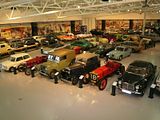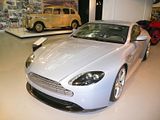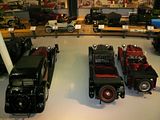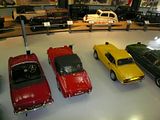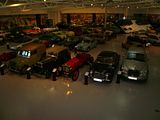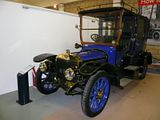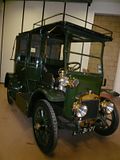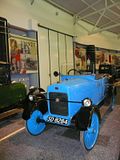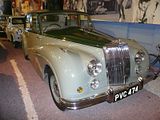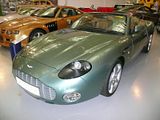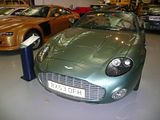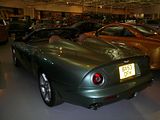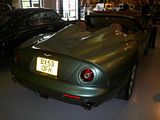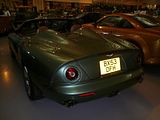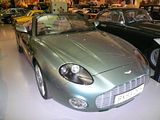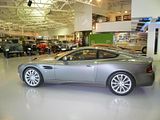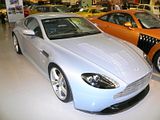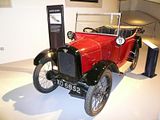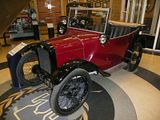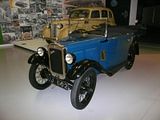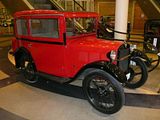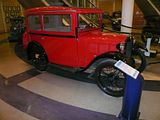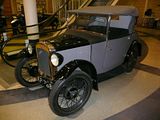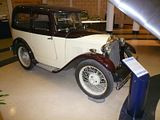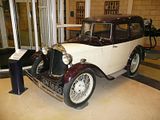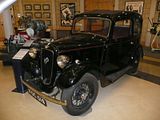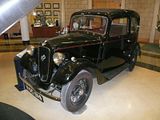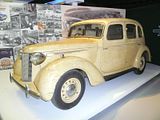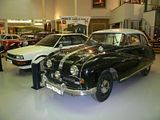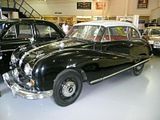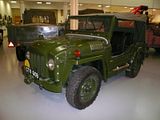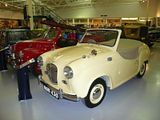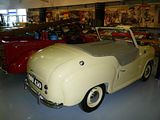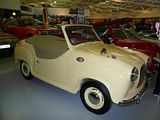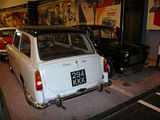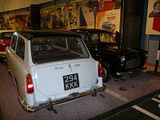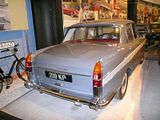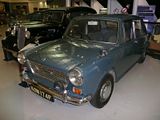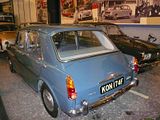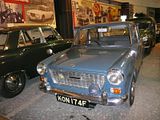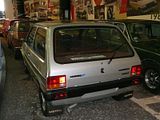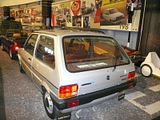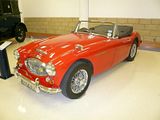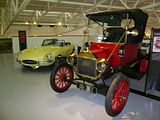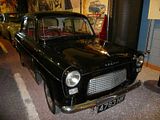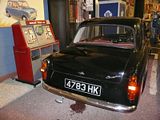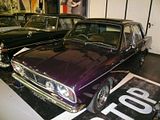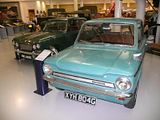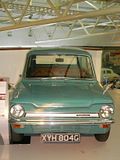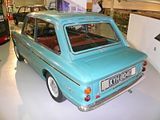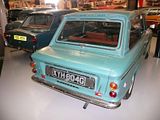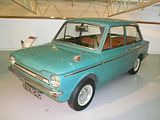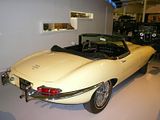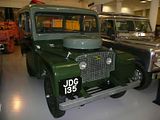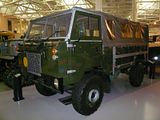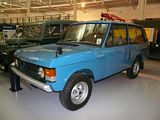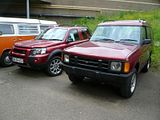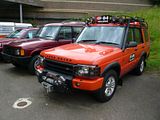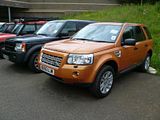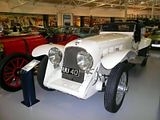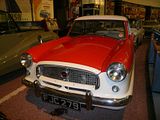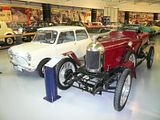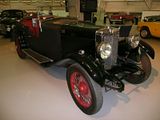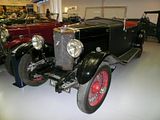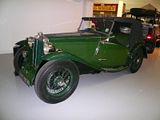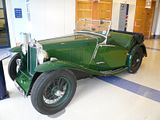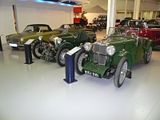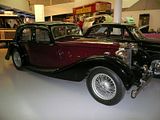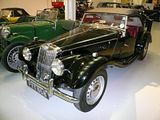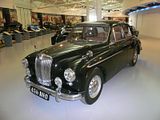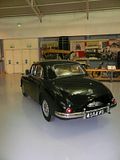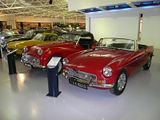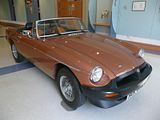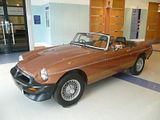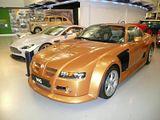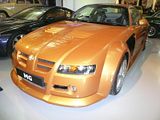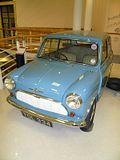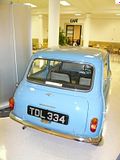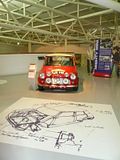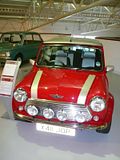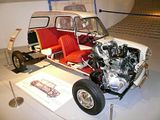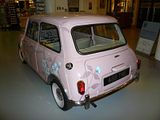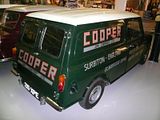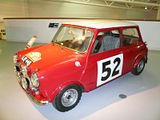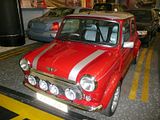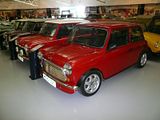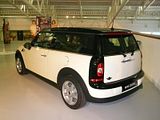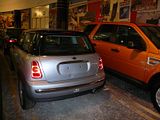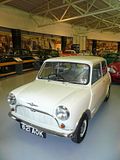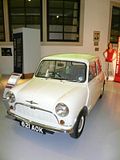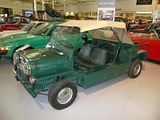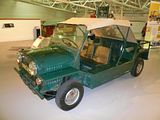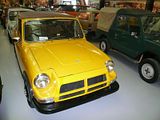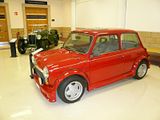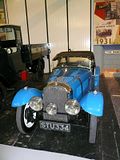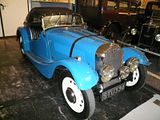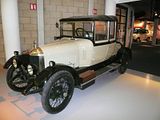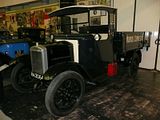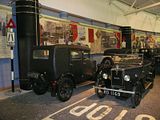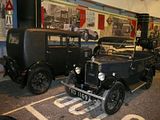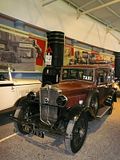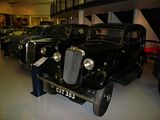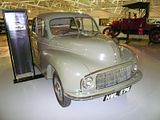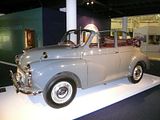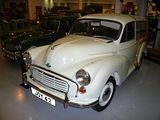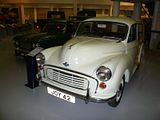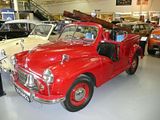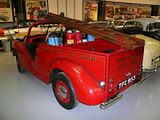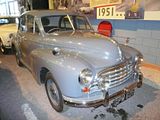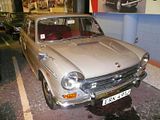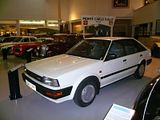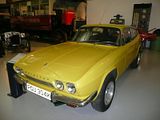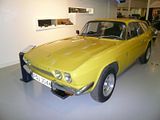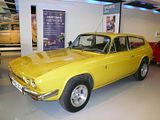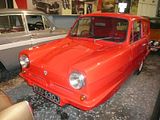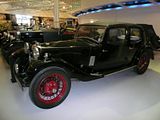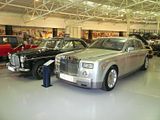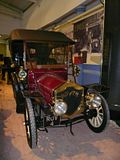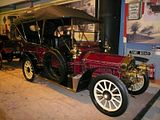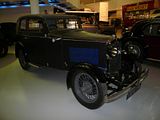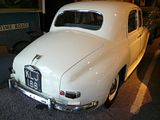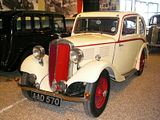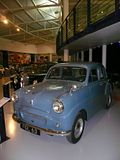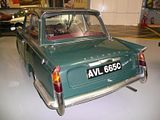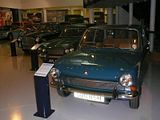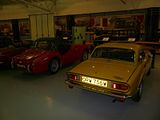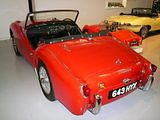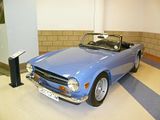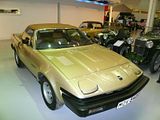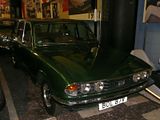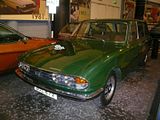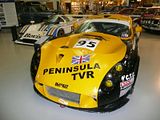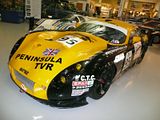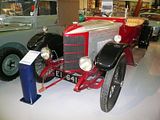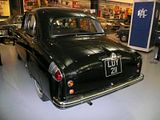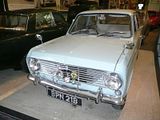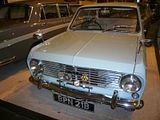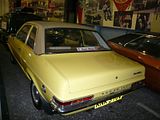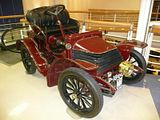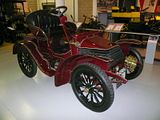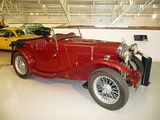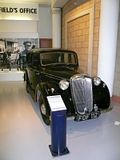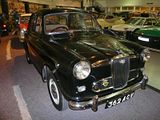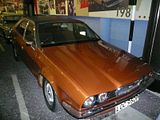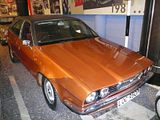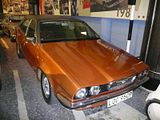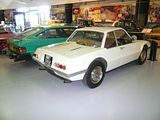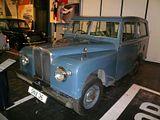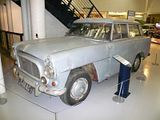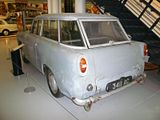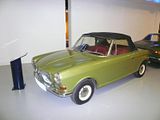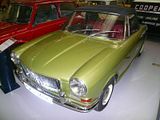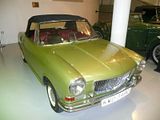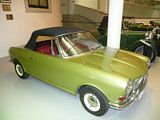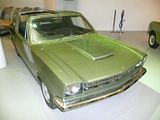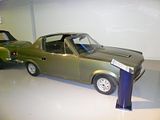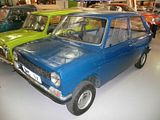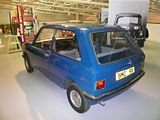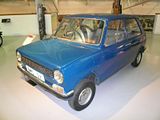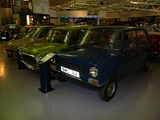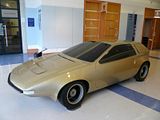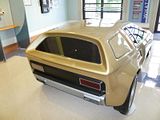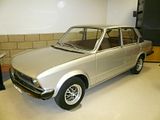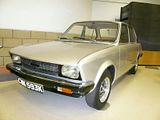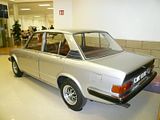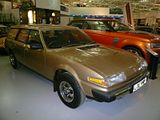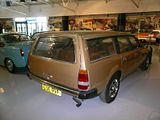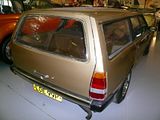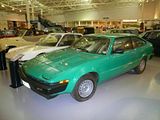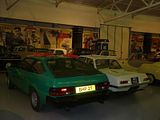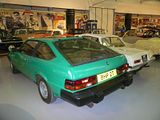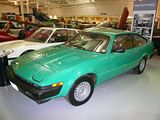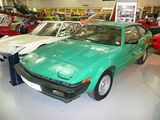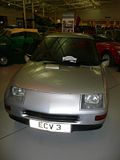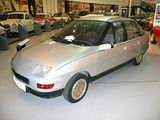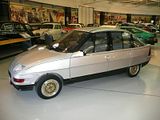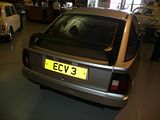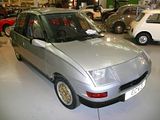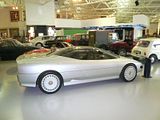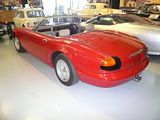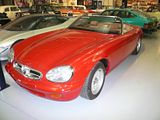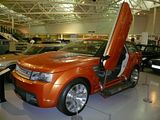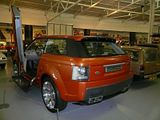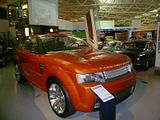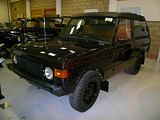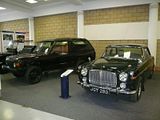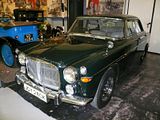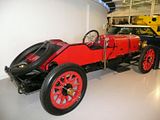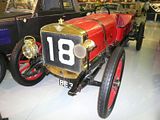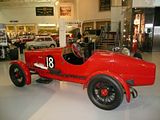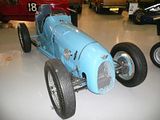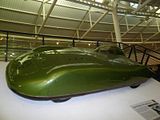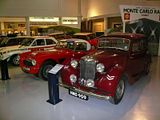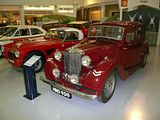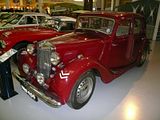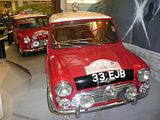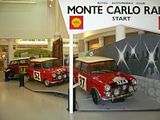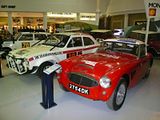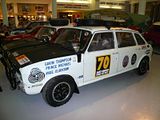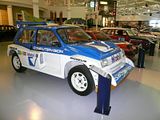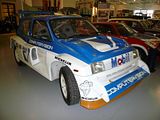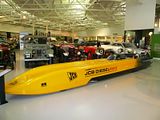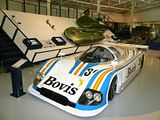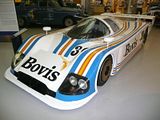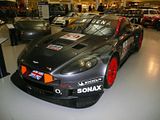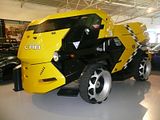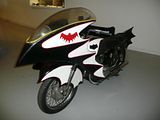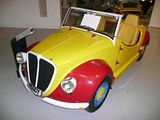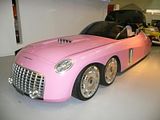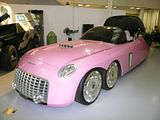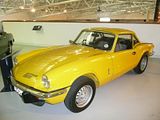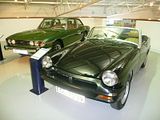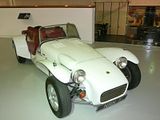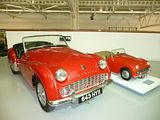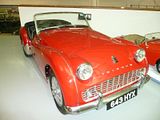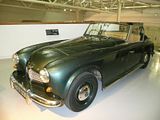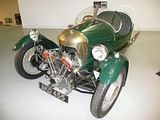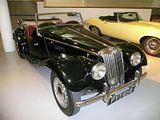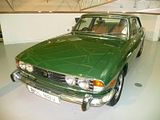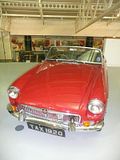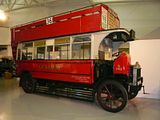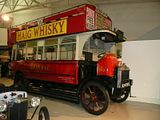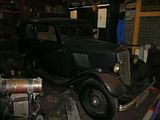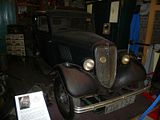Now cared for by the British Motor Heritage Trust, the origins of this impressive collection go back to the 1970s, when a division of what was then called BLMC (British Leyland Motor Corporation) was formed to look after the company’s historic vehicles. Later rechristened the BL Heritage Trust, and registered as a charity, a number of the cars were put on display at Syon Park in west London. The collection was far larger than could be accommodated in those premises though and plans were drawn up for a purpose built site, which was eventually manifest as the buildings we now know at Gaydon, just off the M40 and not far from the heart of what once was Britain’s car manufacturing industry, on the site of a former RAF air base. The new museum opened in 1993, and it has proved very popular with car enthusiasts ever since. Initially, the only vehicles to be found within the collection were those that had an association with companies that had formed part of BMC, British Leyland, Austin-Rover, and most recently Rover. When Rover Group was purchased by BMW in 1994, the collection was included in the sale. Six years later, when BMW disposed of Rover, the collection changed ownership again and was bought by the Ford Motor Corporation, who still own it today. This provided the impetus for the collection to be expanded to cover other manufacturers products as well, meaning that once again there were far more cars than could be display or even stored on site. Some of the less historically significant vehicles were sold, but even now, there is always something different to see whenever visiting the museum.Gaydon has also become a very popular location for motoring related events, as it boards plenty of space, and is easily accessible from the nearby M40 motorway. With access to the test track at neighbouring Aston-Martin often on the agenda, many car clubs come to the site for their meetings, whether they are for a few cars or a population from hundreds to thousands. Accordingly, over the years, I have been many times, and from those visits have assembled this report showing many of the cars in the collection, and some of the special exhibitions that have been mounted over the years. Were you to go tomorrow, you would not necessarily see all the vehicles depicted, or even as many as are shown here, though in fact you will see plenty and the museum is almost over-filled with cars, meaning that they can appear a little crammed in.
The outer perimeter of the museum contains what is supposed to represent a road travelling through history, with the earliest cars at one end, gradually progressing through to the more modern era. Plenty of period memorabilia is used as a backdrop. When the museum was refurbished a few years ago, an upper gallery was created, which provides not only more display space, but also a great vantage point for many of the exhibits.
THE EARLY CARS
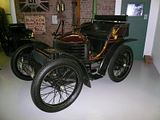
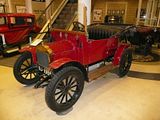



An early Austin, the 1907 York Landaulette and a 1911 15hp Towncarriage
This 1924 Trojan sports solid wheels. Not good for ride comfort!
ARMSTRONG-SIDDELEY
The Sapphire came from a manufacturer better known for their airplane construction. These costly cars faded from the motoring scene in the very early 1960s. This one is from 1955.
ASTON MARTIN
The very rare Zagato styled DB AR1. This is one of only 2 right hand drive cars from the 99 car production run from 2003.
The Vanquish, dating from 2001. This car is the one which was displayed at the Geneva show that year.
This is the 2007 concept version of the latest V12 Vantage
AUSTIN
The Austin Seven is notable not just for being the car that really mobilised Britain, in much the same way as the Ford Model “T” did in America, but also for the fact that when built under licence in Germany by the Dixi motor company, this laid the foundations for what we now know as BMW, and when modified by one William Lyons, became the Jaguar. Examples of all of these cars are on show, including an early and a late Austin Seven itself.
This Austin Sixteen has been signed by all the employees at the Longbridge plant at the time it was made, on 25th June 1946, to mark the production of the millionth Austin.
Aimed at the American post war market, the A90 Atlantic was not a success. This is a 1951 car.
The Champ was aimed at military customers in the mid 1950s. This one dates from 1952
This is the only factory produced convertible version of the A30 and dates from 1952.
The A40 of 1960. This was the first Farina designed car for BMC.
The A60 Cambridge was one of 5 cars based on the same basic Farina design. This one dates from 1963..
For many years, this was the best selling car in Britain, the ever popular “ADO16”, Austin 1100. This is the rare automatic model, which had a 4 speed Automotive Products transmission squeezed into the sump where the usual manual box was to be found.
Although the car suffers a certain amount of ridicule and derision now, the Metro was hailed as Britain’s world beater when it finally appeared at the 1980 British Motor Show. This is a very early car in top spec 1.3 HLS form.
AUSTIN HEALEY
The 3000, now a very popular and valuable car. This is one of the last cars made, a 1966 model 3000 Mark 111.
FORD
A 1922 Model “T” Tourer.
This 1955 Anglia 100E was Ford’s small car offering of the time – think of it as the Fiesta of its day.
The 1968 Cortina 1600E, a first move by Ford to capture the emerging market for something that bit “special” but still affordable. The aubergine paintwork is all part of the period appearance
HILLMAN
The Imp was the Rootes Group’s answer to the Mini, and although it promised much with its advanced aluminium engine, light weight and rear engine, shoddy build quality and early reliability issues meant it had a difficult start in the market and the car was never that successful. This is a 1969 Super model.
JAGUAR
There are few Jaguars included in the collection, but there is an example of the iconic “E” Type. This 1967 car spent many years in the foyer of the Queen Mary.
LAND ROVER
A number of different Land Rover models are on show, illustrating the widely different body styles and adaptations to which this vehicle has been put over the years.
Some of the more recent cars are also on show, including an early Discovery TDi and examples of the Freelander
LEYLAND
A true behemoth! The 1927 Straight Eight.
METROPOLITAN
These cars were designed for the US market, but their weedy engines meant that they never enjoyed that much sales success, despite the low prices and vibrant colours. A few were sold in the UK. This is a 1958 car.
MG
The 1925 “Old Number One”
The large and not that sporting 18/80, dating from 1931
MG sports cars were popular in the 1930s as they were relatively affordable. This is a 1932 J2
MG did also make some larger cars during this period. This is an 1936 SA saloon
The short lived TF model, dating fro 1954.
The Magnette was a popular sports saloon in the mid 1950s. This is the facelifted ZB car
There are a couple of examples of the ever popular MGB, with one dating form 1960 and one being the last of the line of the limited edition LE model which marked the end of MG as we knew it in 1980
Sadly, the MG X-Power SV never got the chance to prove itself on the market, as the car was just about ready when Rover went into administration, so we will never know whether it would have sold well, or proved to be simply too ambitious for the price at which it was to be sold. It is certainly a striking design
MINI
Several Minis are included in the collection as you might expect, and there was a special display mounted during 2009 in honour of the car’s 50th anniversary, with a wide variety of cars on show from the earliest to today’s less than Mini-sized Mini.
This is one of the oldest surviving models
The Mini Moke was fun car for the 1960s that saw a brief revival when production resumed in Portugal in the 1980s. This is one of the prototype twin engined cars from 1962
In 1974, a number of “safety” cars were produced, based on current production cars, but with numerous features to improve the protection that they offered for occupants and pedestrians. This is the one, the SRV4, based on the Mini
The ERA Turbo model from 1990 was something of a handful, with very questionable reliability.
MORGAN
A 1930s 4-4 car, powered by a Coventry Climax engine.
MORRIS
Among the earliest Morris cars, with the very distinctive “bull nosed” grille, are these Cowley and Oxford cars from 1913.
The first Morris truck that was produced, the 1924 T Type
1929 Minor tourer
1931 Cowley in taxi format
The Morris 8 was a popular family car in the mid 1930s. This one is dated 1936.
Rumour has it that Lord Nuffield, then Chairman of Morris, described the 1948 Minor as looking “like a poached egg”, but this did not stop this car from being extremely successful. It was the first British car ever to sell more than a million examples. This is the very first car produced, and elsewhere in the displays you can find a 1960 Tourer and the 1969 Traveller. A 1953 fire truck conversion of the pickup also features.
The MO Series Oxford was styled to look like a slightly larger Minor. This one dates from 1952.
The 1800S in Mark 2 guise. A very roomy car indeed, with far more interior room in a car whose dimensions are less than today’s Ford Focus.
NISSAN
This is the very first Japanese car that was made in Britain, the 1986 Bluebird, which was produced in the Washington plant in the North East. Once a common sight, these cars have finally all but gone from our roads now.
RELIANT
The Scimitar GTE, made all the more popular after HRH Princess Anne bought one. This is a 1971 car.
Reliant were also well known for their three wheeled cars, long before Del Boy made the Regal van so well known!
RILEY
From the 1930s, comes this 1933 Kestrel Nine.
The RM Series of cars were popular sports saloons and tourers for those who could afford them in post War Britain. This is a 1952 RMA 1.5 litre.
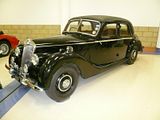
ROLLS ROYCE
The current model Phantom still looks large and imposing among all the exhibits.
ROVER
One of the very first Rover cars made.
1912 12hp Landaulette
The 1929 Light Six Sportsmans Bluetrain
An early P4 model, a car that was very popular with the professional classes in the 1950s. This is a 75 model from 1950.
Examples of both the first and last of the still popular 75 model are included in the collection. The 1999 car is a 2.5 litre V6 Connoisseur and the 2005 car, hand-assembled after the company had entered administration, is a 2.0 CDT car. The very last Rover ever made.
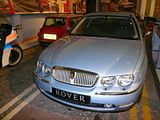
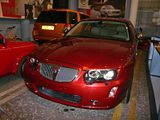
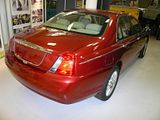
STANDARD
This 1934 10-12 Speedline is typical of the sorts of cars that were popular in the 1930s.
The Eight was a very basic car indeed, lacking even an external boot lid. Access was from inside the car. This is a 1955 model.
TRIUMPH
The Vitesse, which appeared in 1962, took the popular Herald body and offered far better performance thanks to a six cylinder engine. This is a 1965 car
The 1970 model 1300 was the first front wheel drive Triumph, launched in 1965 as a more costly replacement for the Herald, which went on in production for a further 5 years.
There are several Triumph sports cars, of course, with examples of the Spitfire and TR included. The Spitfire 1500 is the very last such car produced. Similarly, the TR7 is also the last of the line, from 1981
This is the very last of the long running “Innsbruck” 2500S Estate cars. I used to go to school in one of these cars, and loved it
TVR
The first TVR to grace the collection appeared only recently, but what a car. This is a 2001 model T400R GT car.
VAUXHALL
Hard to believe now, but Vauxhall’s early reputation was for not cheap sports cars. This is a “Prince Henry” from 1913.
After the second world war, Vauxhall made a range of large family cars called Wyvern and Velox, and this is one of those cars, a 1953 Wyvern.
The Viva was launched in 1963, and extended Vauxhall’s range downwards for the first time since before World War 2. The car was made in a brand new factory in Ellesmere Port on the Wirral, thanks to government policy that forced all car makers to invest in areas of the country where the traditional industries were on the wane. There were three generations of Viva spanning nearly 16 years, and examples of the 1964 HA deLuxe and the last 1979 HC cars are on show
WOLSELEY
One of the earliest Wolseleys, a 1906 6hp Phaeton.
A pretty Hornet sports car from the mid 1930s
This 1939 Wolseley Eight was Lord Nuffield’s personal car
The 1500 was a medium sized car conceived to replace the Morris Minor, but which was only ever offered in Riley and Wolseley versions. In the end, the Minor outlived this design by some years. This is an early car from 1957
The very last car badged Wolseley was the short lived top of the range ADO71 model, which was launched in March 1975, alongside its Austin and Morris stablemates. By September that year, the whole range was badged Princess and the Wolseley was no more
PROTOTYPES and CONCEPT CARS
In the 1950s, Rover were experimenting with gas turbine technology and this car, the T3 was one of the prototypes that was made, in 1956. A later T4 car was made, based on the P6 2000 saloon.
In the mid 1960s, Rover once again contemplated a sports car and working with Alvis, produced this, the mid-engined P6BS. Only one car was ever produced. What a shame it never made it to the market
The Road Rover was an early concept for the car that finally appeared some 12 years later as the Range Rover. The first of these dates from 1955, and the second one, the last of 9 prototypes made, from 1958
This pair of sports cars were produced several years apart. What a shame that neither of them were produced. The earlier, ADO34, dates from 1964 and was intended to replace the Midget. The,later one, from 1970, the ADO70 was styled by Michelotti and was based on the Mini Clubman
Numerous designs were produced for possible successors to the Mini, and some of them are included in the collection. The 9X prototype, an Issigonis design dates from 1968 and was very advanced for its day
More of a design exercise than something intended for production, the 1969 Zanda is certainly distinctive
Dating from 1972, this car, produced in partnership with Crompton, is an electric vehicle, powered by batteries.
This 1972 Michelotti design was a proposed reskin of the Triumph Dolomite. Nice enough, but I preferred the original car!
This Rover SD1 estate is one of two that were built. The other car is displayed at the Haynes Museum, and sports a different rear end treatment. This car was conceived to replace the very popular large Triumph cars, and although Sir Michael Edwards, then Chairman of BL drove one for a while, the SD1 was never put into production. It would surely have done well, as there were few competitors on the market at the time
This car was codenamed Lynx, and very nearly made production, before being cancelled at the eleventh hour.
ECV3 was produced in 1981 and was a design optimised for efficiency. I was surprised to find out just how small the car is, only ever having seen it in pictures prior to its appearance here.
Roy Axe’s 1985 MG EX-E was a striking design that still looks good today.
In the late 1980s and early 1990s a number of designs were produced for the possible relaunch of the MG sports car, and this is one of them, the PR5. It went on, in modified form, to become the TVR Chimaera
Many were disappointed when this striking Range Stormer appeared in production as the rather less bold Range Rover Sport.
FORMER ROYAL CARS
A number of the display cars were previously owned by the Royal Family. These are just some of them.
COMPETITION and RACE CARS
There has been Motor Sport almost as long as there have been cars, and there are a few early sports cars included, such as this 1908 Austin Grand Prix car and the 1907 Standard Roi de Belges.
Red Flash is a Brooklands competitor based on the 1925 Morris Oxford.
The Austin Seven proved to be a popular base for all sorts of sports and racing cars in the 1920s and 1930s, and this 1935 Austin Seven Special is typical of the sort of car that was produced.
The streamlined MG cars from the 1930s and 1950s are preserved here, with the 1938 EX135 which achieved 200 mph on a German autobahn joined by the 1954 EX179 and 1957 EX181 cars.
This MG YB series dates from 1953, and was a semi-works rally car
This A90 Westminster was used in 1955 to rally half way around the world, from “Cape Cold” (Norway) to “Cape Hot” (South Africa).
The Mini enjoyed much success as a rally car, not least on the Monte Carlo rally and this montage pays tribute to that.
The Big Healey was also a successful competition car in its day. This is a 1959 car and was the first factory entered competition model.
The 1970 London to Sydney rally competing Austin Maxi
This is one of the Range Rovers that was tested through the South American jungle in 1972
The TR8
The Metro 6R4.
A recent record breaker
This Aston Martin Nimrod NRA dates from 1982 and is a Group C Le Mans car. When Victor Gauntlet took joined Aston Martin in 1981 he was keen to see the companies name return to racing circles, at the same time Robin Hamilton, Aston Martin enthusiast, dealer and racing driver, and son of a former Aston Martin Le Mans winner Duncan Hamilton, was looking for financial support to develop his new sportscar project. With Gauntlets backing and financial support from Pace Petroleum, one of Gauntlets other companies Nimrod Automobiles was created. Nimrods chassis was conceived by Eric Broadly of Lola and powered by a Tickford tuned version of the Tad Marek designed Aston Martin V8. For the 1982 Le Mans two Nimrod were entered, one Hamilton’s official works car and the other by Viscount Downe, for whom one of his drivers, Ray Mallock was to apply his own development skills to the project. Mallock was joined by drivers Mike Salmon and Simon Phillips. The car finished 7th at one time running as high as third and harrying the Porsche 956’s. The Nimrod also finished 3rd in the 1982 World Sports Car Championship.
The 2005 Aston Martin DBR9 GT is the first privately entered and most successful such car
CARS from the MOVIES
A special exhibition that was run during 2010, these cars were all movie stars. Some are more readily placed than others!
BRITISH SPORTS CARS
This was another special exhibition in 2010, with a variety of cars on show, some better known than others.
COMMERCIAL VEHICLES
There are just a few commercial vehicles included in the collection, such as this 1921 AEC S Type Bus.
There is a recreation of a pre-war garage scene
There is much to enjoy at Gaydon. As admission is usually included in the entry price for any of the events that take place in the grounds, it is tempting to restrict one’s visits to these days, but there is such a lot to see that a trip just to the museum would not leave you feeling short-changed. Recommended.More details available on the museum’s own website: http://www.heritage-motor-centre.co.uk/2010-12-28 19:17:40


